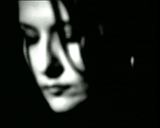
 Author of all texts
about mythology on
these web-pages is
Lidija Bajuk:
Author of all texts
about mythology on
these web-pages is
Lidija Bajuk:
|
lidija.bajuk@posluh.hr
scena.hgu.hr/lidija-bajuk/
- The Sky
- The Mountain
2. PERUNIKA
- Leluya
- Ball lightning
3. AQUARIUS
- Candlemen
WATER MAID
- Fairies
- Witches
4. DRAGON
- Water
SNAKE
- Bogorodica
(Rainbow)
5. GREEN GEORGE
- The Moon
- Corn Spirit
6. LEPA MARA
- Hair
- Embroidery
7. GRABANCIJAŠ
- Light
8. PESJANEK
- Forest
9. LITTLE RED HAT
(DWARF)
- The Cap, Little Hat
10. STRAHE & MRAKI
(GIANTS)
|
CANDLEMEN
((PO)SVECARI/SVECORI, DUPLERI, THE SOULS OF
THE DEAD, WANDERING CANDLES, NAVI, PATULJCI (DWARVES),
SVECARCI, SVETLA, SVJETLOSTI LUTALICE (WANDERING
LIGHTS))
|
|
This is the reason why the richer Slavs used to burn their dead and thus quicken the separation of the soul from the body. If the soul was not sinnful and if it rained into its open grave during the burial, after seven weeks the soul will became a Heavenly soul and cross the heavenly water across a bridge. In the daytime the bridge is the rainbow and at night it is the Milky Way. It will enter Heaven, which is sometimes called ''Nav'' and which is represented as a heavenly meadow, where it will join all the other dead members of its family. Sinnful souls go to Hell when they cross the underground water. Souls can be tied to a rock or a tree which is the main reason why trees are planted in graveyards and why the headstones are made of stone. They can be lured, but also frightened away by dancing. Souls who have not been well taken care of and honoured enough, souls of people who died too soon or in a violent way (especially souls of young women who died giving childbirth), souls of people who comitted suicide, souls of cowards, souls of those who were killed by the hand of the enemy, souls of perjurors and criminals and of those who did not receive the last rites from a priest will join the lowered, fallen gods and become evil spirits searching for vengeance. In pre-Christian times the last rites was actually the ceremony of the dying saying farewell to their loved ones and asking them to look after their souls and protect them from the impurities of the decomposition. The evil spirits can never be redeemed for their sins, not even if they pass through the fire of Hell three times. Everybody who is going through a transitional period in their life, like getting married, as well as the innocent, the beautiful, the young, the healthy, the strong and the good suffer under their influence. People can protect themselves from them by wearing a veil, cutting circles (the sun's symbol), washing, laughing, getting drunk, spitting, spilling water, wearing clothes inside out, wearing ribbons, with a broom, showing the naked behind, with aromatic thorny, poisonous or blessed herbs, with a green twig, horns, amulets such as wolf's eyes, shooting, preparing mysterious food and drinks or behaving in mysterious ways, having sharp objects, cutting the finger, having a horseshoe (the moon's symbol), mirrors, gold necklaces, amethist, shells, organizing ritual bonfires and dances, having salt, swaying, sprinkling holy water, smoking the room, ringing bells or wether-bells, saying words that have ritual meaning and prayers. Ritual processions are especially effective. All ritual processions are connected with the cult of the ancestors. There is no proof that the Slavs worshipped totems, but the ritual dressing up and wearing masks is very similar to it. The origins of it lie in the identification of the plants and animals as the man's ancestors, but also in frightening away and disorienting the souls of the dead. Candlemen visit their descendants during the whole year, especially if they are called by their name and especially on certain holidays like Shrove Tuesday, Palm Sunday, Easter, St. George's day, St.Philip's day, Ascension, Pentecost, midsummer day, All Saint's day, during the Advent, at Christmas Eve, at Christmas, St. Stephen's day, New Year's day, Epiphany. In order to befriend the spirits and to secure the prosperity and well-being of the village different rituals took place, like processions, carnivals, St. George's May festivities, ''rusajlije'' or ''ljelje'', burning of the bonfire on midsummer day (St. John's day), etc. Old people from Medjimurje claim that the candlemen fly to the church on All Saint's day to attend the evening service. They can be seen by those who are without sin. It is a Christian teaching that the word of God separates the spirit (the male principle) and the soul (the female principle). The Holy Spirit works on the body which enlivens the body. Through the transformation of the soul through the spirit, i.e. through the search for God, the soul is saved and becomes immortal. In this way it influences the body and teaches it to live a rigtheous life in this world as well as after the resurrection. The psychologists say that the soul binds the I (all of the psychological functions) with Myself (the unconsciuous). When a personality develops fully, the biological and instinctive Eve's love purifies into the spiritual love of the Virgin Mary. At the highest point of the human development it attains its meaning through the selfless giving of love and thus becoming a method of self-affirmation through giving birth of your own light, i.e. Sun, i.e. wisdom. The transmigration of souls or metempsychosis is only characteristic of divine creatures and represents the passage from one form into another with the purpose of trasferring knowledge. |